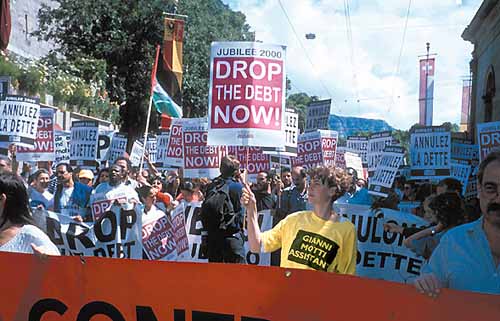Gianni Motti
dal 19/1/2001 al 21/2/2001
Segnalato da
19/1/2001
Gianni Motti
Kunsthalle Bern, Bern
Kunsthalle Bern, in January and February. Motti does not produce objects. Difficult to sell, his works rarely outlive the rumours, which accompany them. Not fitting easily into the interior of an art collector, they are not even objects of pleasure.

Motti does not produce objects. Difficult to sell, his works rarely outlive the rumours, which accompany them. Not fitting easily into the interior of an art collector, they are not even objects of pleasure. These objets d'art have given up their legitimate place in the galleries, preferring to take up the ways of the mass media in the form of a scoop or a news agency dispatch: similar to a virus, the artist has deviated the world network in the service of his project, infiltrating its continual flow of data; he has delegated the realization of the document to an anonymous editor, attesting to the efficiency of his performance.
(Pascal Beausse)
In 1986, under the guise of a terrorist, G. Motti claimed responsibility for the explosion of the space shuttle Challenger before the press agencies. In June 1992, he contacted the Keystone Agency and assumed responsibility for the earthquake, which caused a crack in the Californian desert for seventy-four kilometres, still visible today.
In November 1997, a young graduate of the School of Fine Arts in Grenoble received a scholarship to work with a well-known artist for six months. The choice of the young man fell upon G. Motti, who decided to send his assistant on a trip round the world, as far as his scholarship would take him, maintaining that travelling educates the young. The student was only obliged to wear all the time a T-shirt with the sign of Gianni Motti Assistant.
Set on fulfilling his mission, the youth made his way across the United States, Tanzania, Australia, the Caribbean finishing his adventures in Paris, where an anti-National Front demonstration was under way. In fact, he ended up at the back of the procession of the French Communist Party. This event has been registered by a photo, which appeared in a cliché published in l'Humanité-Dimanche.
Again in November 1997, Gianni Motti managed to get into a Human Rights Session at the United Nations, taking the place of an absent Indonesian delegate. When the voting started on ethnic minorities, G. Motti took the floor, speaking on behalf of these minorities and rallying other representatives for their cause. These representatives finally left the assembly hall as a sign of protest, thus interrupting the session.
In September 1999, the artist was invited to participate in an exhibition by two young students in Berlin. A few days before the opening, the two young ladies organizing the event were taken hostage and held prisoner for five hours in their apartment by an armed robber on the run. According to the rumours, the intruder was on an assignment, and had taken refuge in their apartment, while the police went round the neighbourhood. Informed of what had happened, G. Motti succeeded in negotiating with the German radio and TV stations, which accorded him exclusivity of reconstructing the story, helping him to get partial financing for the exhibition.
In 1999, G. Motti started the Big Crunch Clock running for the first time. The digital clock composed of twenty numbers, going through billions of years in a tenth of a second, does a count-down of the five million years which separate the sun from the moment of explosion. The clock, which is actually a detonator, is intended to function with solar energy, an irony of fate in itself. The artist obliges each buyer to adapt the instrument to future technological inventions.
After having claimed responsibility for earthquakes, meteorite rain, eclipse of the moon and the sun, Gianni Motti takes the blame for the greatest natural disaster of all times the disappearance of the solar system, and subsequently, the destruction of the Earth, thus relieving humanity of its millennium fears. With Big Crunch Clock, G. Motti goes beyond the limits of art by creating today a posthumous work without precedent, making us its agents.
(Sarah Zèrcher)
Hours - Tuesday: from 10.00 AM to 9.00 PM - from Wendnesday to Sunday: 10.00 AM to 5.00 PM - Closed on Mondays
Kunsthalle Bern - Helvetiaplaz 1 - Ch-3005 Bern - Tel. 0041313510031 - Fax. 0041313525385



